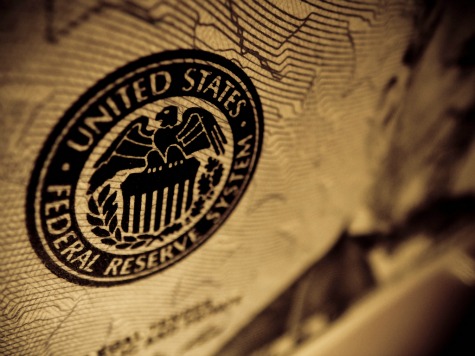The Federal Reserve System would likely accept a $1 trillion platinum coin at face value, according to the former director of the U.S. Mint who helped craft the 1996 law that’s at the heart of the controversy. However, it’s doubtful that creditors like China and Japan would accept such a coin to pay America’s debts.
America currently owes over a trillion dollars to each of those nations.
Phil Diehl was director of the U.S. Mint from 1994 to 2000. He worked with former Congressman Mike Castle (R – DE) to write the law that many on the left claim can be used to bypass the legal limit on federal borrowing. Diehl’s first broadcast interview was Friday morning on “Istook Live!”
Trying to evade Republican and public demands to cut spending, many on the left have flailed about trying to evade the pressure. Many have fixated on the platinum coin as though it were magic. The Treasury has already reached its $16.4-trillion debt ceiling. Extraordinary measures are being used to keep the government operating, but those gimmicks will likely be exhausted by mid-February.
Diehl maintains the mega-coin is a temporary way out, although he admits the 1996 law was never intended for such a purpose. It was designed to attract investors who wanted American precious metal coins and to overcome entangling problems if gold or silver had been used for the purpose.
In the radio interview, I pressed Diehl on why the Fed would treat a coin as worth a trillion dollars and allow government to draw against those funds, when creditors such as China or Japan obviously would never accept such a coin to pay off what the U.S. owes them (over a trillion dollars owed to each of those countries).
Diehl said, “The way this works is exactly the way it works with a quarter.”
The Mint takes a piece of metal and stamps it with a value, then sells it to the Fed for that face amount, he said, adding, “The only difference here is a bunch more zeroes on the face value. The principle is exactly the same, the accounting procedures, the production procedures, everything is the same as a quarter.” He said he believes the Fed would see this as “quite similar to the quantitative easing policies of the Fed, and some wags have called this platinum easing.”
Of course, the difference between a quarter and a $1 trillion coin is a ratio of 4-trillion-to-1. Not even the Jolly Green Giant would treat it as pocket change. And quantatative easing is provoking its own major problems in the economy even without a platinum-plated boost.
The Constitution gives Congress power “to coin money.” But, by definition, money is meant to circulate, requiring that it be in denominations used in everyday commerce. A massive face value doesn’t fit the definition of “money” but is more like an investment instrument such as a loan or a note. (The largest-ever unit of American money was the $100,000 bill. Those never circulated but served as a 1934-to-1969 equivalent of today’s electronic funds transfers of large amounts between banks.)
Diehl was a Clinton appointee at the Mint; he previously worked for Texas’ late Senator Lloyd Bentson, who also was a Secretary of the Treasury. Diehl says he never realized the potential use of the special platinum coinage law until the recent publicity: “We obviously never anticipated that the law would be used as a way of dealing with the debt ceiling.”
Diehl has written his explanation of the 1996 law, his role in it, and how he believes it permits the $1 trillion coin. His comments are available online here.
The law featured two unusual wrinkles, he says: first, the Treasury Secretary was given discretion of whether to issue such coins or not, and second, was given discretion on the face value. The law provides a blank check for the Secretary to choose whatever face value that he/she desires.
I made it abundantly clear to Diehl that I am unconvinced. Minting a $1 trillion coin would further undercut Americans’ faith in government, would give us a banana republic image to the world, could cause immense unanticipated problems, and could further corrupt an already over-politicized Federal Reserve System.
The controversies still rage about the 2008 Wall Street bailout. Its face amount was “only” $700-billion. Imagine the white-hot fury that would be unleashed a sneaky transaction valued at almost half-again as much, all wrapped up in one little coin.
When Peter Jackson finishes his epic Lord of the Rings/The Hobbit movies about the evils unleashed over the One Ring, let’s hope he doesn’t start a new series based on the One Coin.
My exchange with Diehl about the Federal Reserve can be heard here.
My full interview with him is available here.
Former Congressman Ernest Istook hosts “Istook Live!” every Monday thru Friday, 9 am to noon (Eastern). You can listen from anywhere via www.istook.com.
Image credit: Kurtis Garbutt/Flickr

COMMENTS
Please let us know if you're having issues with commenting.